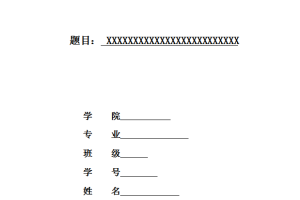浅论多层住宅建筑施工管理
【摘要】 目前我国人口越来越多,多层住宅建筑的需求量越来越大,住宅建筑正面临持续大发展的局势,住宅产业已经成为带动整个国民经济发展的重要体系。。随着科学技术的快速发展。多层民用住宅建筑工程项目在实现现代化的过程中取得了很大成就。但是在质量和管理方面还存在一些问题。为了满足我国住宅产业的可持续发展,我们必须加强对民用住宅建筑的施工管理。本文主要从过分析多层民用住宅建筑的特点和建筑结构体系,加强对多层民用住宅施工管理的重要性和如何加强多层民用住宅的施工管理工作三个方面,来详细阐述多层民用住宅的施工管理工作,通过加强对多层民用住宅的施工管理,从而推动我国住宅产业的快速可持续发展。
【关键词】 多层住宅建筑 建筑施工 施工管理 施工质量
【Abstract】 With the development of our society, a series of problems caused by the increase and movement of population catch more and more attentions of people all over the world. How to acquire and manage the population information effectively becomes the key point of the research of each country. United States developed a famous Topologically Integrated Geographic Encoding and Referencing system. It made the census program more convenient and the management more effective. This paper studies the structure of TIGER Census Database of United States. The study starts with the layers of the TIGER Census Database and their attributes. The layers can be divided into two types, ShapeFile format and dBASE Table format. The first chapter briefly introduces the TIGER database, TIGER/Line files and Redistricting Census2000 TIGER/Line files. Chapter two introduces the Census geographic areas and hierarchy and the layers in TIGER database. Chapter three introduces the major attributes of the layers in ShapeFile format, such as Census Feature Classify Codes (CFCCs). Chapter Four introduces the attributes of the layers in the dBASE Table format, mostly the Summary File 1(SF1)and the PL94-171, which includes all the population and housing information in census. We can generate a deeper realization of the census data through an application example. After reading all the contents above, we will have a deeper understanding of the TIGER database.
【Keywords】 Census;Topologically Integrated Geographic Encoding and ReferencingSystem;Geographic Information System of Population





